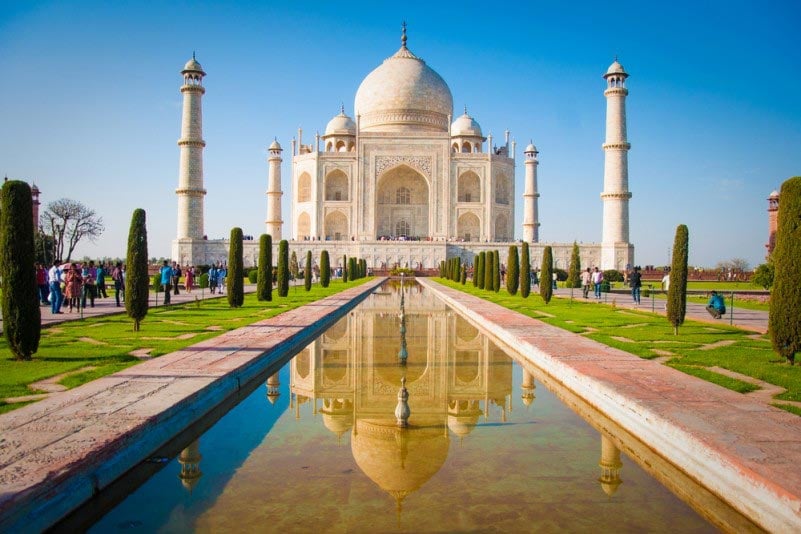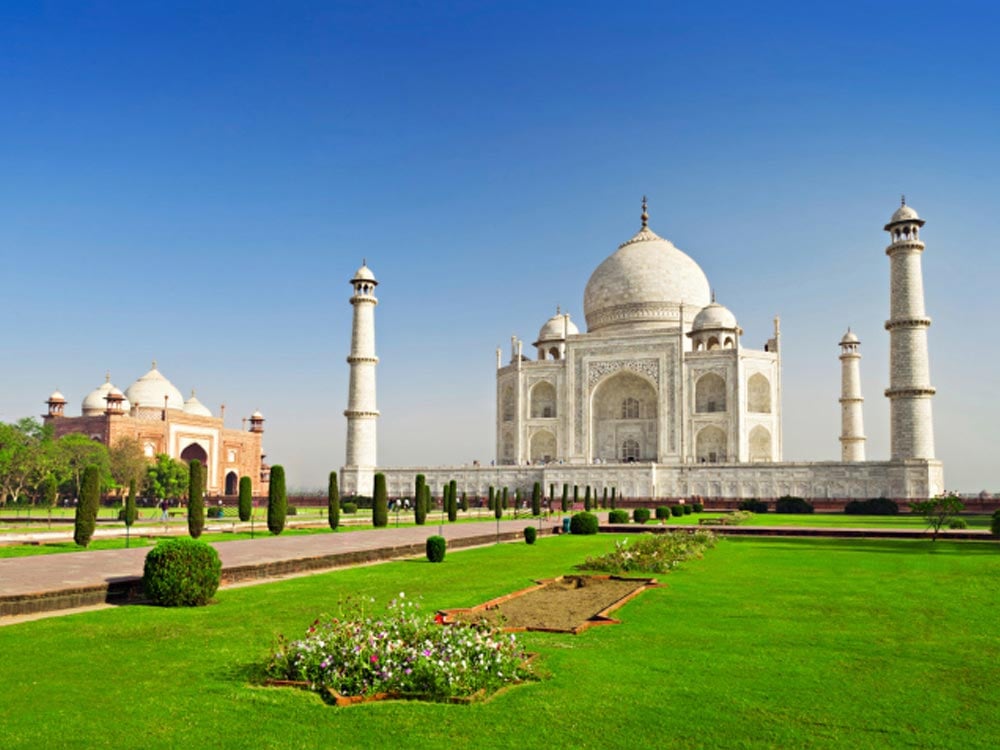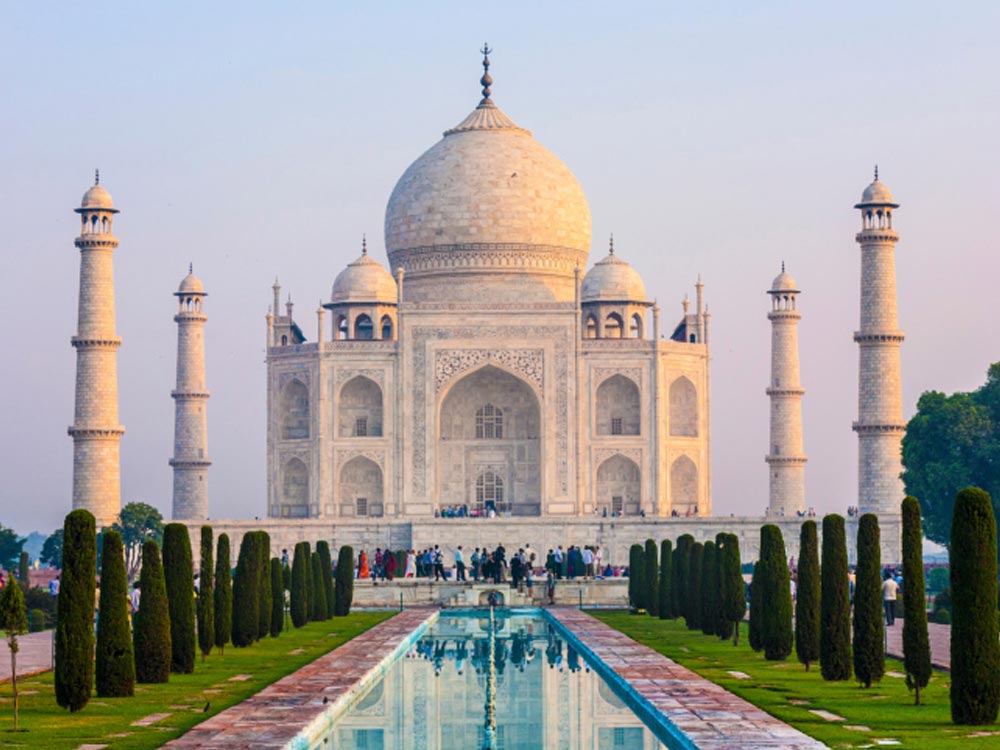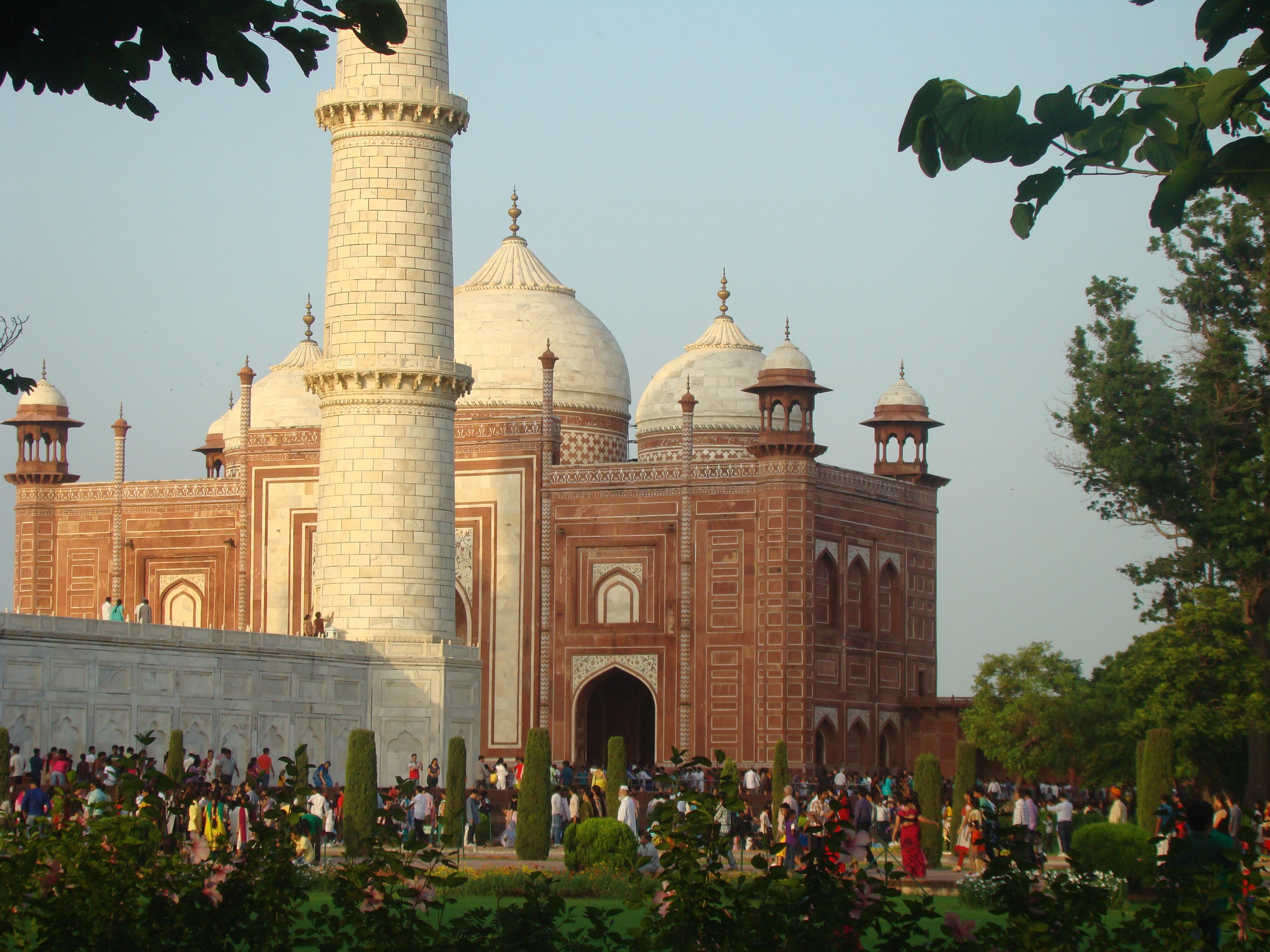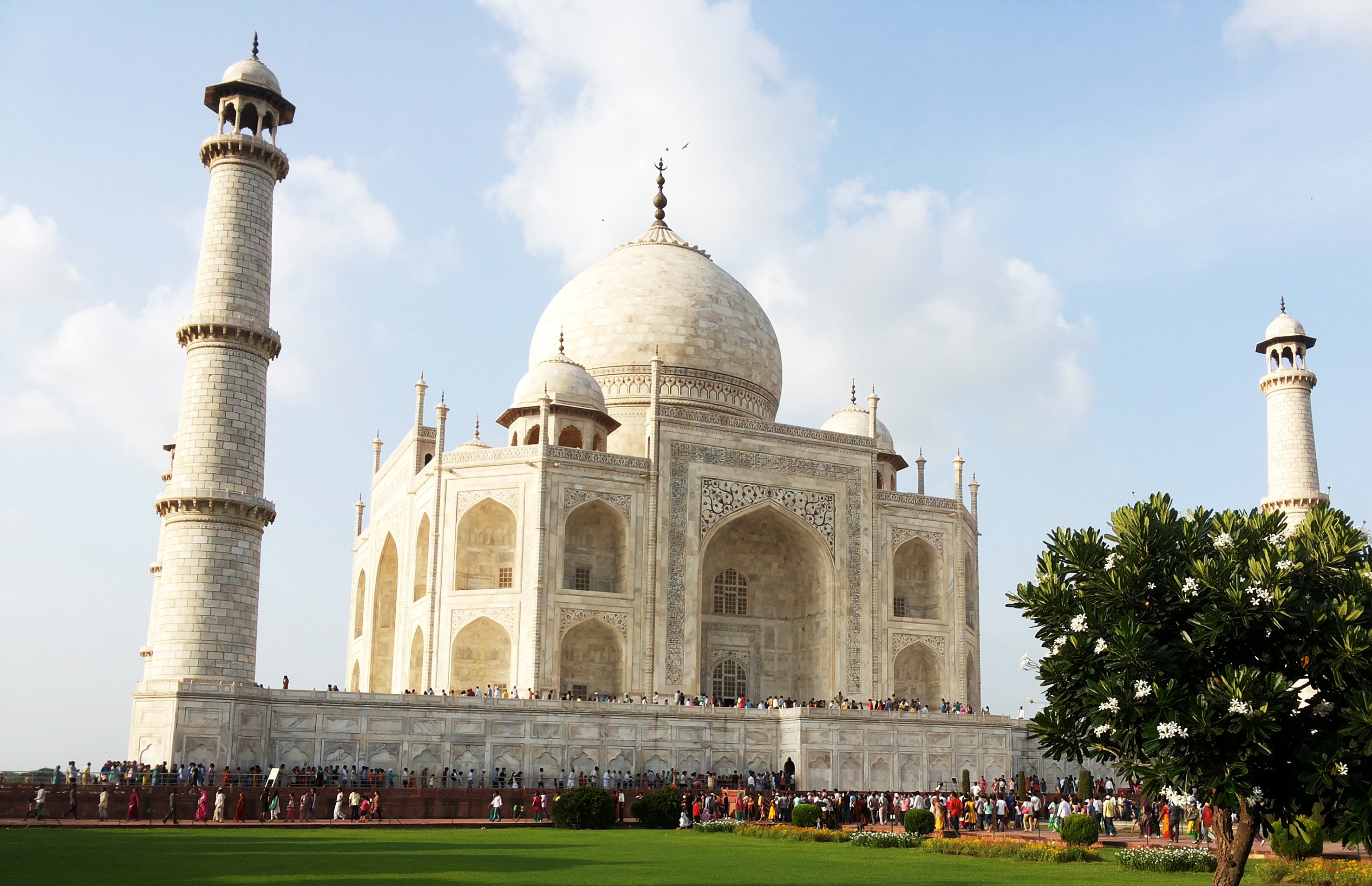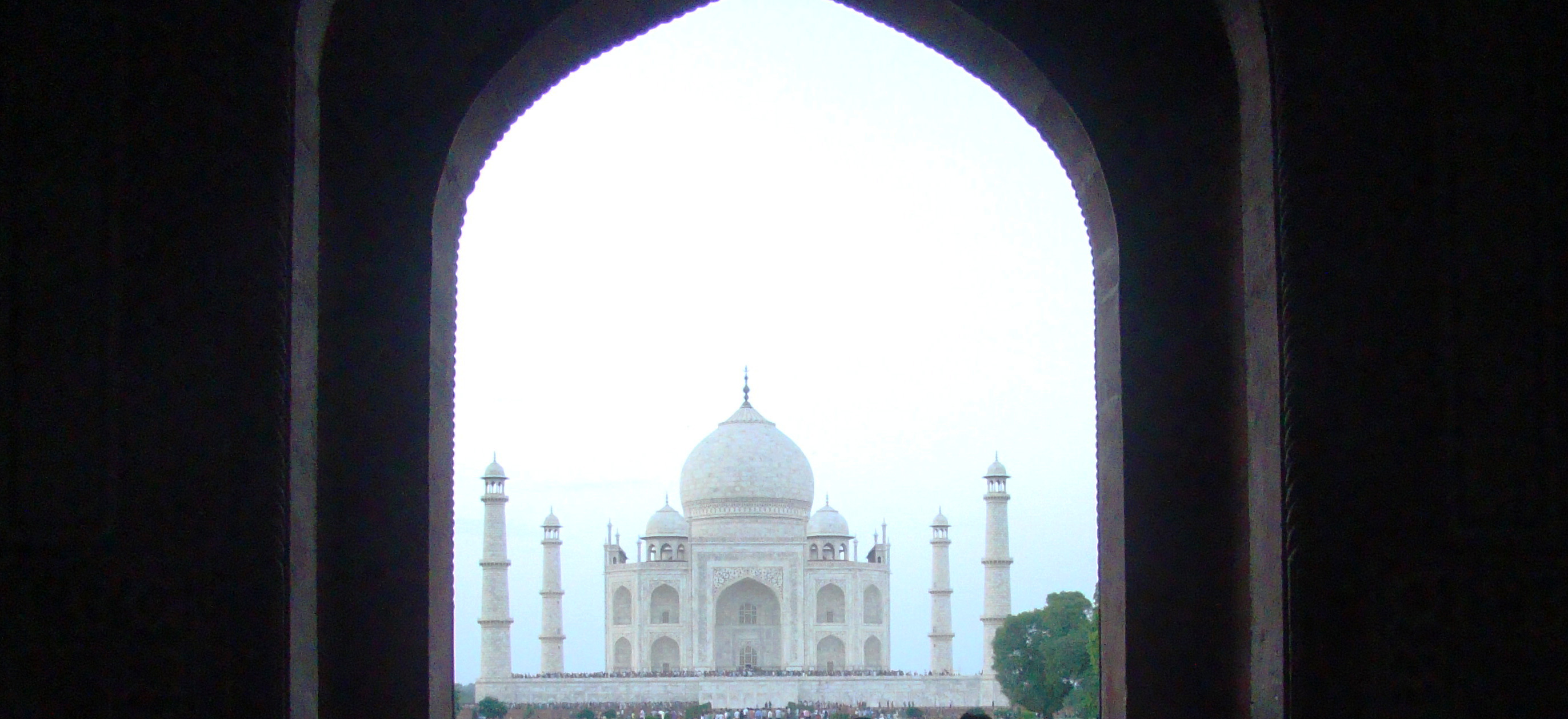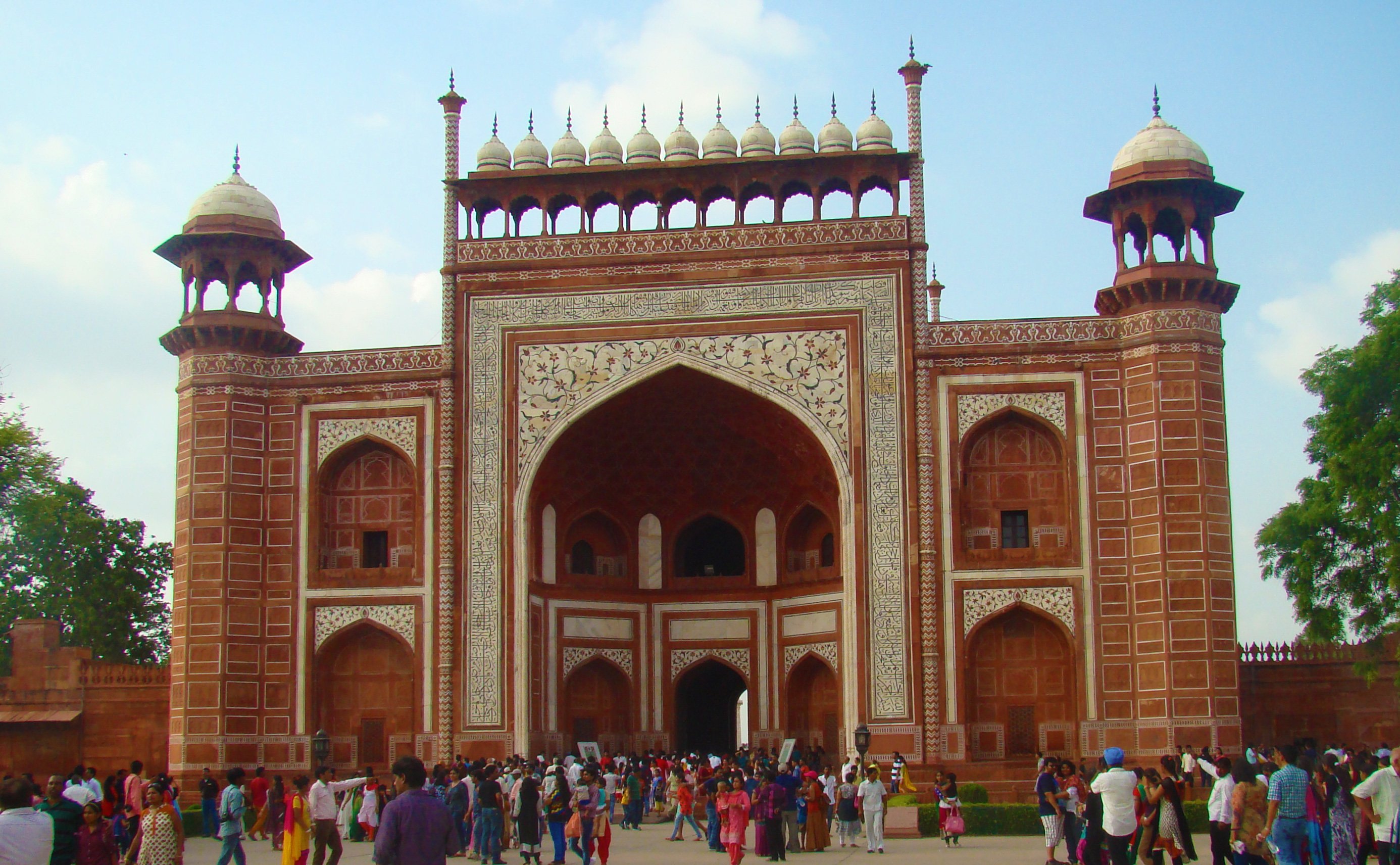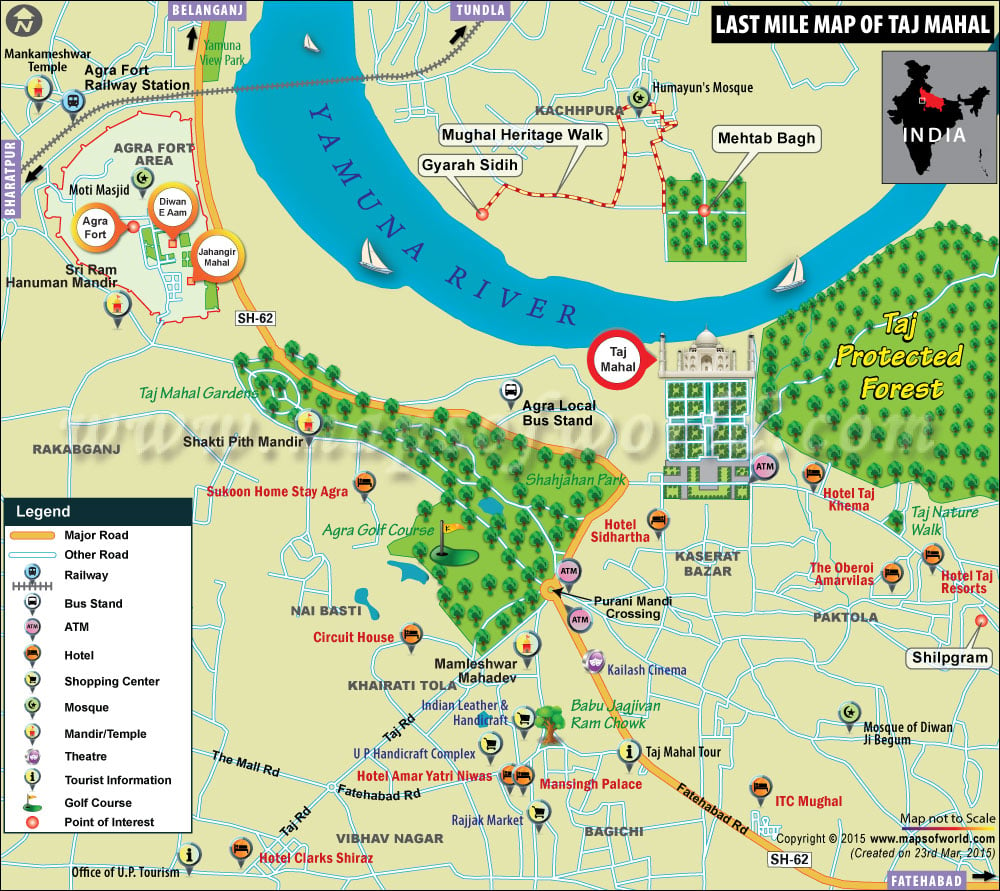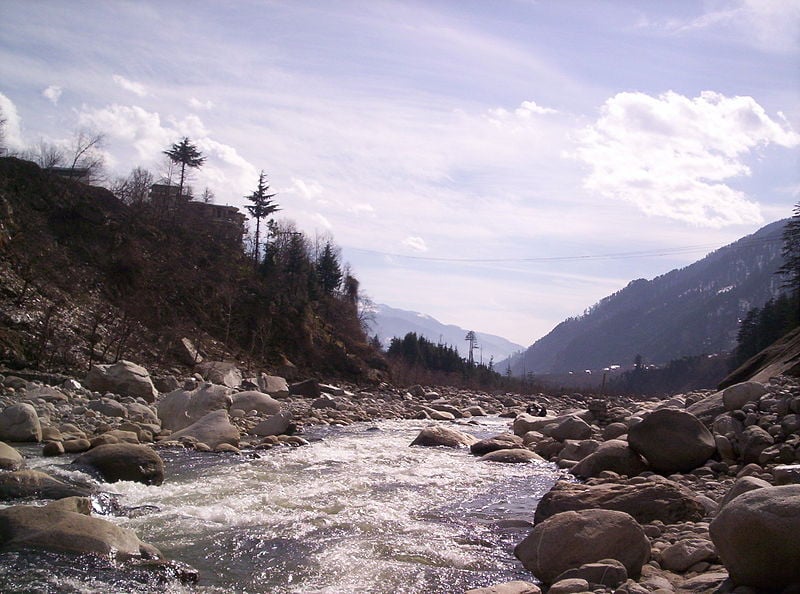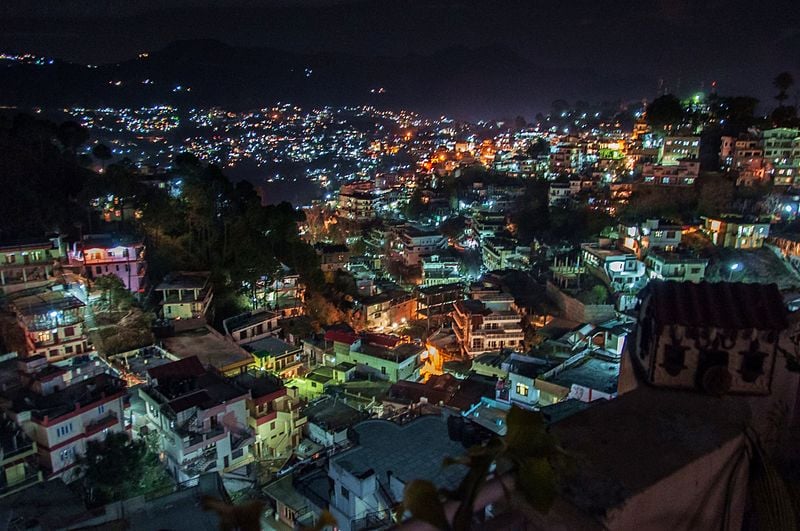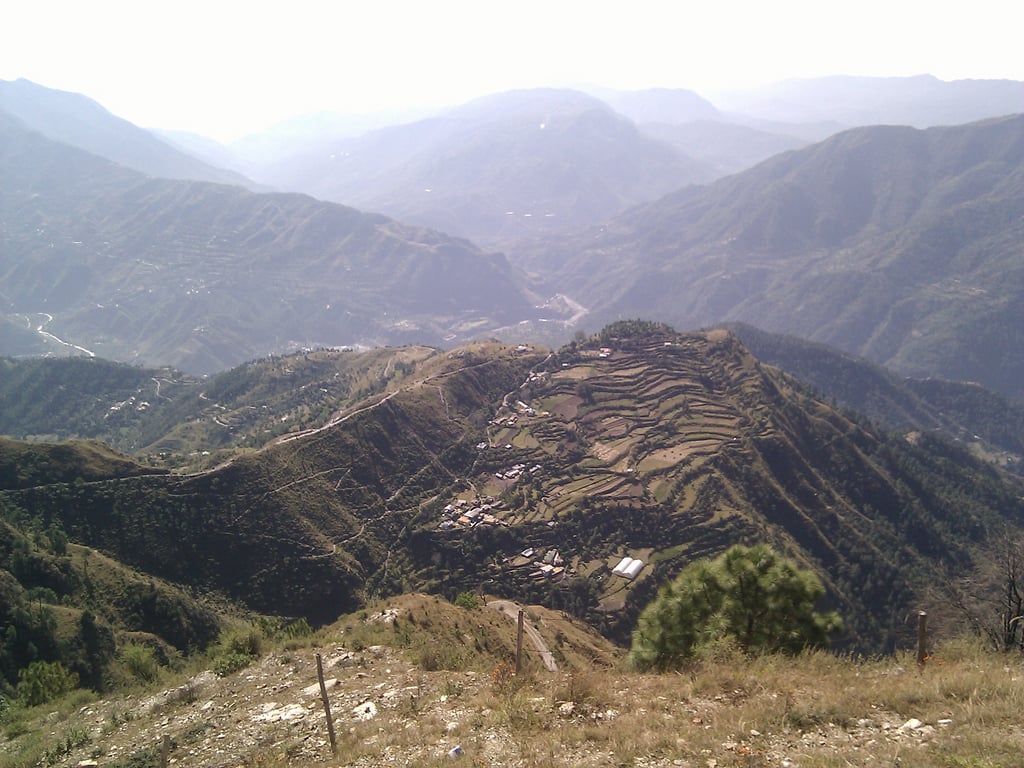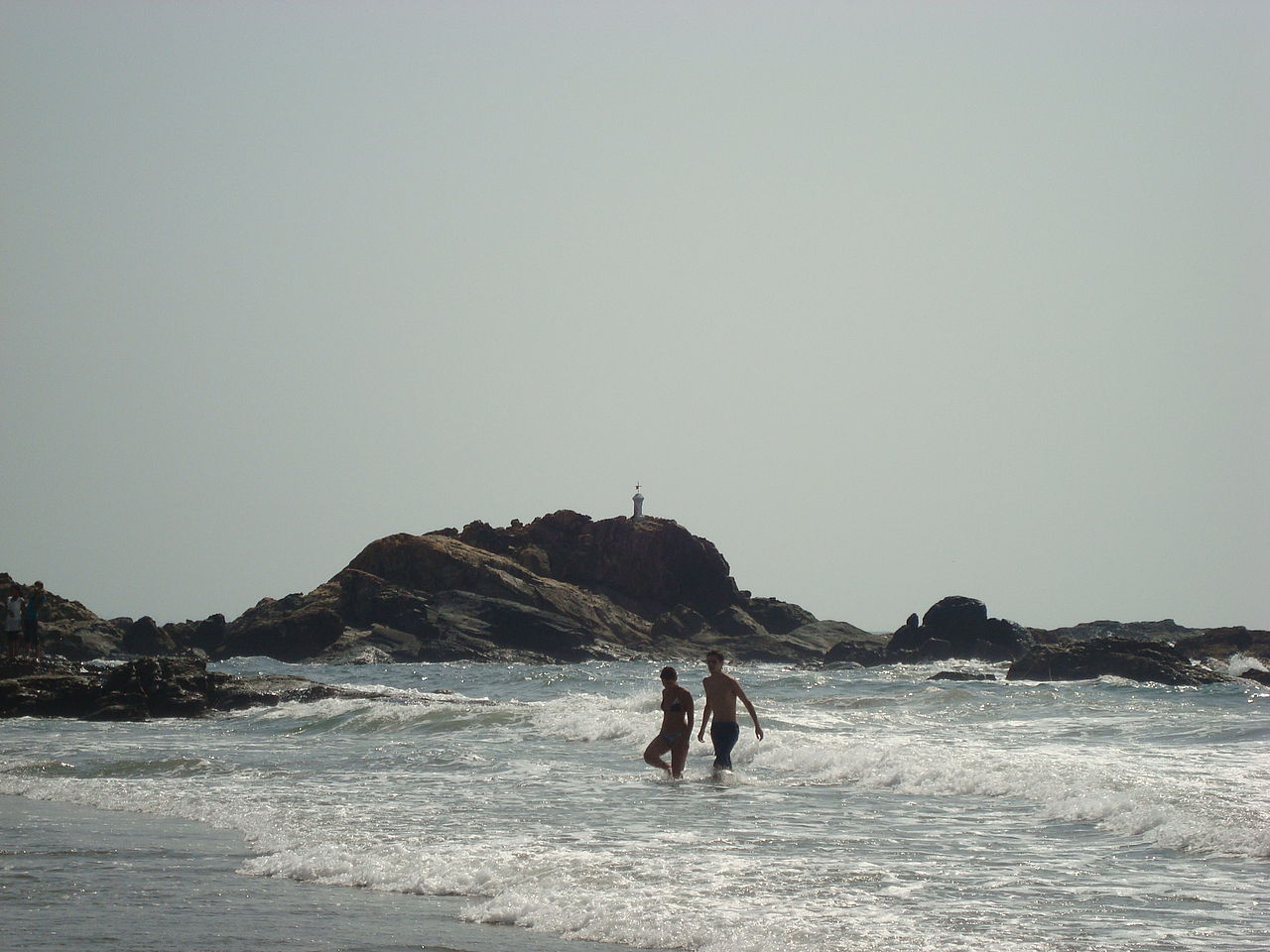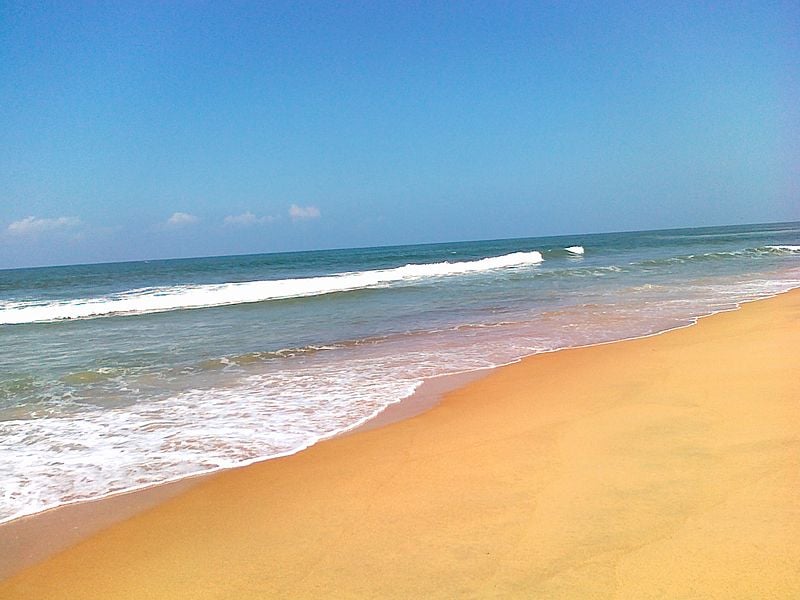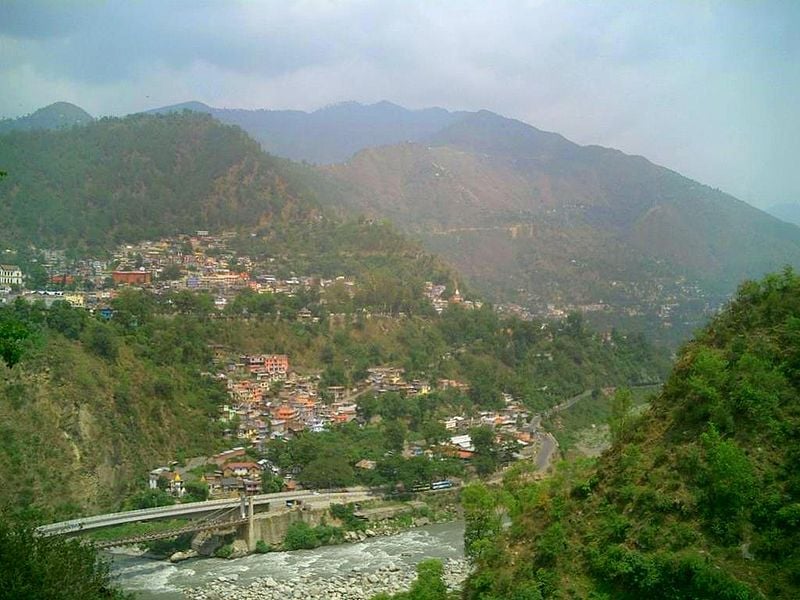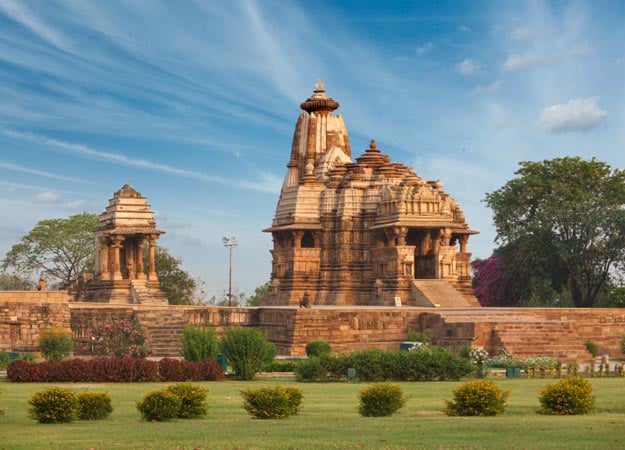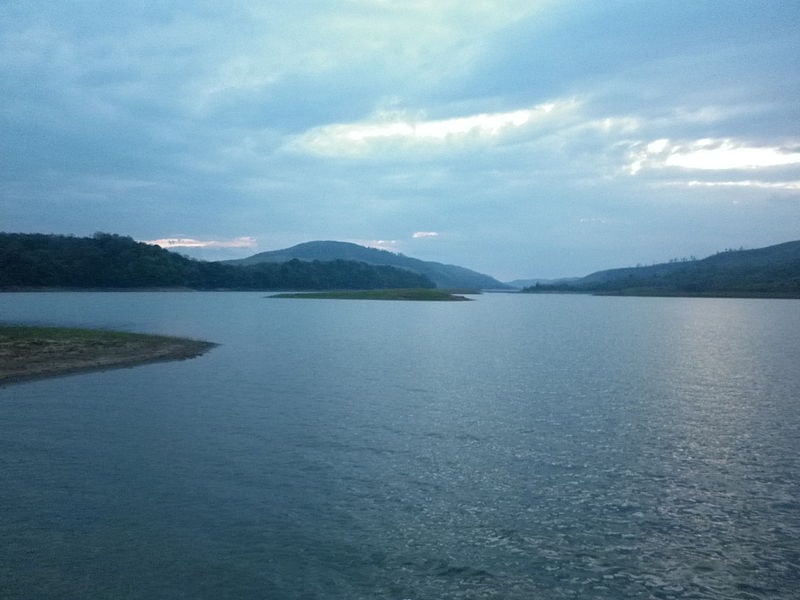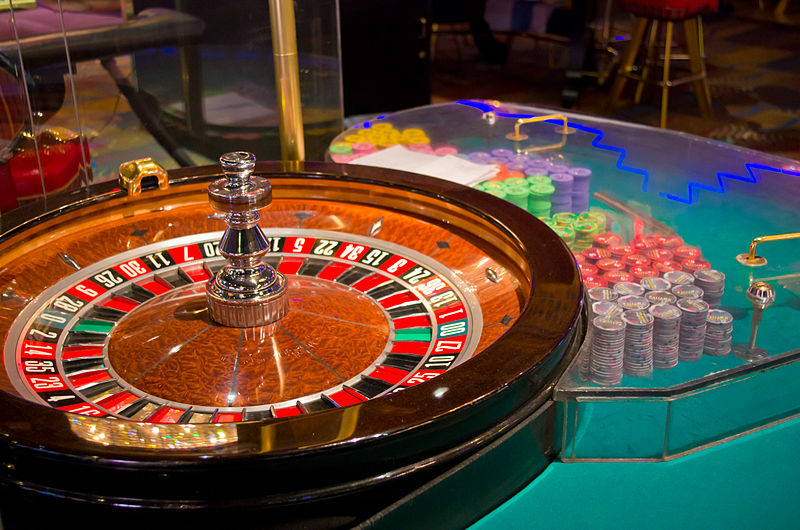Noble. Eternal. Sublime. Taj Mahal – a 17th-century mausoleum on the banks of the Yamuna River in Agra – is a gleaming symbol of love, devotion, and craftsmanship. Erected by Mughal emperor Shah Jahan to cherish the memory of his beloved wife Mumtaz Mahal, it truly is “love wrought in stones.” Literally meaning “Crown Palace”, it is guarded by four slender marble minarets and emblazoned with verses taken from Quran. The eminence of sanctity oozes out from each marble pore. One of the Seven Wonders of the World, the Taj Mahal is a symbol of enduring love, built by the Emperor Shah Jahan to memorialize his late wife, Mumtaz Mahal. It is a mausoleum made of white marble, in which the Emperor had his wife entombed, and after his own death, Emperor Shah Jahan was entombed next to his wife.
In the official history of Shah Jahan’s reign, written by Abdul Hamid Lahori in his book Badshahnama, he mentions the Taj Mahal as rauza-i munawwara, which means the illumined or famous tomb.
Designed in the Mughal Empire style with touches of Persian influence and delicate designs, there is an entire complex that surrounds the mausoleum. The main building was completed in 1648, however, the surrounding architectural forms took five years for completion. The complex includes gardens, fountains, and a reflecting pool, which reflects the image of the Taj Mahal.
The white-colored tomb rests on a square plinth and comprises of a symmetrical building with an arch-shaped doorway crowned by a large dome and finial. The original finial was constructed of gold, but it was replicated by a bronze model in the early 19th century. The top of the tomb is embellished with a lotus design, mixing the Persian and the Indian architectural styles. The recherché inlay work and elaborate craftsmanship together with the calligraphy leaves one utterly fascinated. For the interior inlay work, Shah Jahan preferred to use precious and semi-precious stones.
Four minarets, each more than 40 meters tall, recall the traditional component of the mosques. The minarets were constructed somewhat outside the plinth to avoid damage that may occur if any minaret falls.
Passages from the Quran can be seen bedecking the walls of the entire complex. These passages refer to the day of judgement.
Over the centuries, the monument of love has been experiencing neglect and is deteriorating. During the early 20th century, a major restoration of this wonder took place. This UNESCO World Heritage Site is now in danger due to excessive pollution. The restoration works undertaken by the government are slow.
After a tour of the Taj Mahal, visitors feel hungry. There are many eating joints near the Taj Mahal. Some of the food joints include the Silk Route Restaurant, Zorba The Buddha, Olive Garden, and Capri Restaurant.
If you are seeking accommodation in Agra, check out these Places to Stay near the Taj Mahal. Some of the nearby attractions that you must visit while in Agra include the Agra Fort, Fatehpur Sikri, Sikandra – The Tomb of Akbar, River Yamuna, and Mathura city.
Also Checkout : List of Hotels near the Taj Mahal
Taj Mahal Map
Where is Taj Mahal Located?
The Taj Mahal is located in Agra city of India, in the Uttar Pradesh state. The Taj Mahal is situated upon the banks of the Yamuna River, overlooking Agra Fort. Agra’s Domestic Airport is connected to Indira Gandhi International Airport, Delhi. One can take a flight to Agra or choose to hire a cab to reach Agra. The Agra city is also connected via rest of the country with a fine network of railways. You need to check the availability of tickets at the Indian Railway website.
Address: Agra, Uttar Pradesh, India. Pin: 282001
- Distance from Delhi: 233 km; estimated travel time by road: 3 hours and 6 minutes (via Yamuna Expressway)
- Distance from Jaipur: Around 309 km; estimated travel time by road: 4 hours
- Distance from Agra Fort: Around 3.4 km; estimated travel time by road: 10 minutes
- Distance from Fatehpur Sikri: Around 49 km; estimated travel time by road: 1 hour and 5 minutes
- Distance from Rajasthan: Around 489 km; estimated travel time by road: 7 hours and 36 minutes
- Distance from Mumbai: 1,200 km; estimated travel time by road: 20 hours and 14 mins
Taj Mahal Facts & History
- The symbol of love, the Taj Mahal was built in the year 1653.
- In 1983, the Taj Mahal was listed as a UNESCO World Heritage Site.
- Around 20,000 people were hired for the construction of the Taj Mahal.
- It took 22 years to complete the monument.
- The Taj Mahal was built in a huge Mughal Garden of 17 ha area, set on the right bank of the Yamuna River.
- Under the Falcon City of Wonders Project in Dubai, a replica of the Taj Mahal, named as the Taj Arabia will be built. This super luxury hotel is expected to have 400 opulent rooms. The Falcon City will create some residential and commercial complexes adjoining the hotel.
- The Tomb of Itimad-ud-Daulah in Agra is called Baby Taj.
- A replica of the Taj Mahal has been constructed in Bangladesh, India.
Taj Mahal Opening & Closing Hours
The opening hours of the Taj Mahal are from sunrise to sunset on all days except on Fridays as it is closed on Fridays.
Best Time to Visit Taj Mahal
Many recommend visiting the Taj Mahal around sunrise, before the arrival of huge crowds on the train from Delhi, allowing for better photos. Sunrise and sunset also showcase the Taj, often casting soft light and lovely colors onto the monument and the reflecting pool. Around the time of a full moon, it is sometimes open at night, though the Night View is limited, and visitors must stay at the red sandstone plaza. The months of October through January are usually the best months for visiting the Taj Mahal as they are cooler.
Taj Mahal Tickets
Different rates are applicable for entry in the Taj Mahal. For foreign tourists, the ticket costs Rs. 750, the citizens of SAARC (South Asian Association for Regional Cooperation) and BIMSTEC (Bay of Bengal Initiative for Multi-Sectoral Technical and Economic Cooperation) countries have to pay Rs. 510, while Indians have to pay Rs. 20. Children below 15 years are allowed free entry in case of both the foreign and domestic tourists.
Ticket outlets:
- Ticket booths at the Western Gate (near Saheli Burj) and Shilpgram (750 meters from Eastern Gate) sell tickets from sunrise to sunset.
- The Southern Gate ticket booth is open from 8:00 am to 5:00 pm.
More on Taj Mahal
- What does the name Taj Mahal mean?
The word ‘Taj’ means ‘crown’, while ‘Mahal’ means ‘palace’. The name ‘Taj Mahal’ means ‘the crown of palaces’ or ‘crown palace’. - What is inside the Taj Mahal?
The graves of Shah Jahan and his beloved Mumtaz are located in the Lower Tomb Chamber, inaccessible to visitors. The Upper Tomb Chamber comprises of decorated cenotaphs and the octagonal perforated marble screen surrounding the cenotaphs. - What is the present condition of the Taj Mahal?
The marble of the Taj Mahal is getting yellow due to acid rain and pollution. The industries located near the Taj Mahal emit harmful gases and discharge effluents in the river. It has resulted in the degradation of the wonderful monument. - What are the steps taken by the government to save the Taj Mahal?
The government of India has embarked upon a ten point initiative for the reduction of pollution in the Taj region. Two of the most important developments under this program include: 1.) The use of LPG has been made mandatory for all the houses in the Taj Trapezium area. 2.) Around 22 outlets in Agra sell unleaded petrol. - Where is the Black Taj Mahal?
The Mughal Emperor Shah Jahan wanted to build a Black Taj Mahal just opposite to the White Taj Mahal, to express his mourning for the beloved Queen Mumtaz Mahal. His wish couldn’t get fulfilled because of his son Aurangzeb, who deposed Shah Jahan. - Did Shah Jahan cut the hands of the workers who build the Taj Mahal?
It ia a local legend that the Emperor Shah Jahan cut the hands of the builders of the Taj Mahal, but there is no evidence to support it.
Taj Mahal Video
Other Important Updates
- From June 16th, 2015, Taj Mahal will offer free Wi-Fi access courtesy of the state-run telecom operator, BSNL. They will place 21 hotspots within the complex which would offer tourists with 30 minutes of free usage, after which they will have to buy vouchers if they want to continue to use the service.
- Starting from 26 December 2014, tickets to the Taj Mahal in Agra and the Humayun Tomb in Delhi, have been made available online. A 24X7 helpline has also been launched for tourists visiting from both within the country and abroad. One can dial 1800111363 from a mobile phone and 1363 from a land phone to access the helpline. The helpline is already available in Hindi and English, and will soon be available in 10 international languages, including Russian, German, French and Spanish. ‘Welcome Cards’ will be made available to foreign tourists arriving at nine international airports as will be the Incredible India Calendar 2015. The first phase of Tourist Visas on Arrival (TVOA) has already been rolled out. The Ministry of Tourism expects that these measures will address security concerns of visitors from abroad, make traveling to India more convenient, and will boost the tourism sector.

